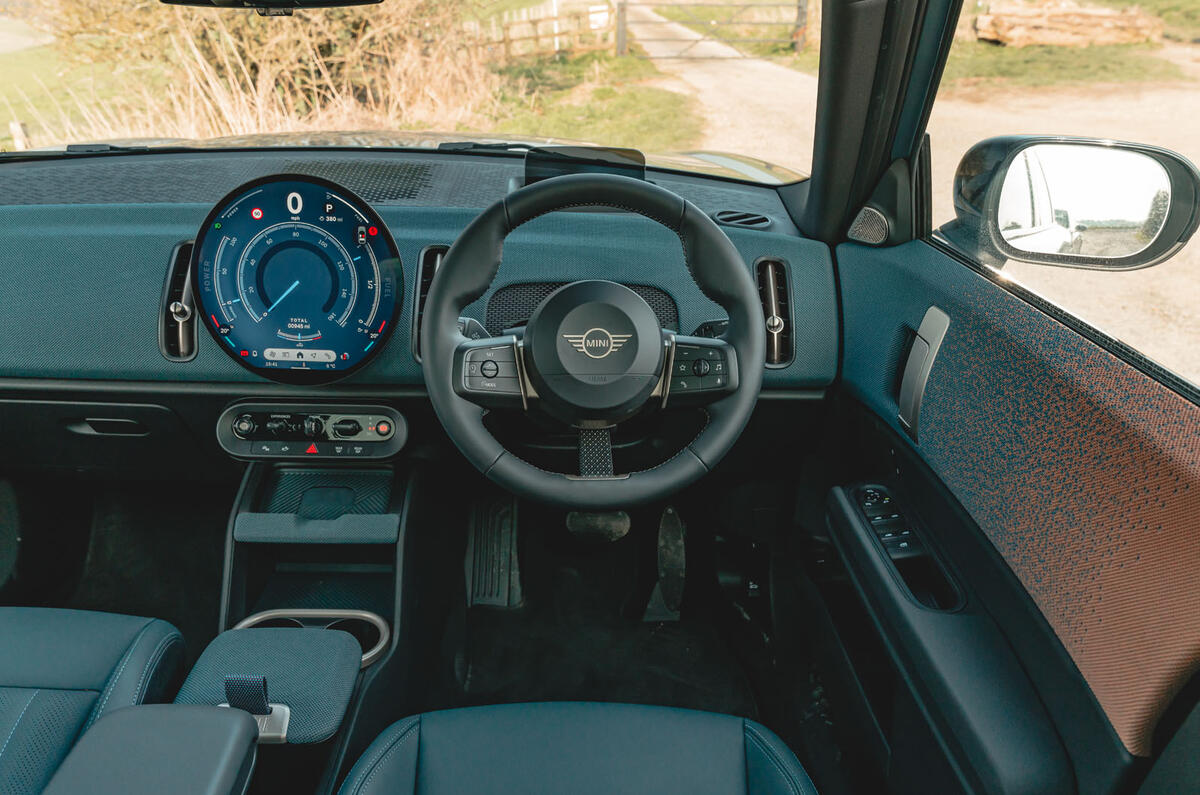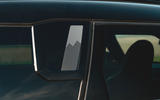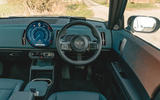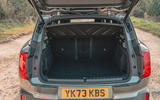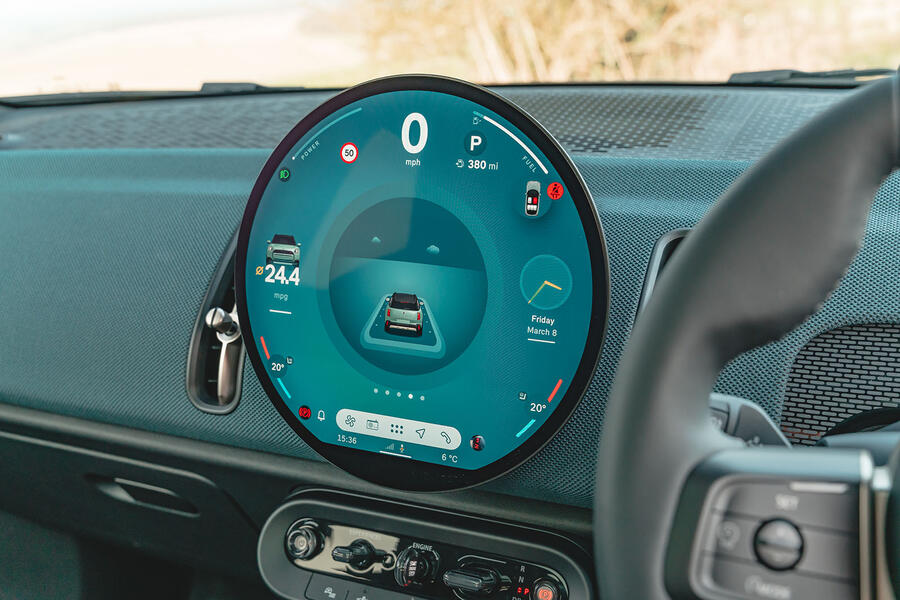This is the BMW Group’s third swing at the idea of a family-sized modern Mini. The Mini Countryman SUV has been around as a model since 2010 but until now it has had the aura of a water-tester model – a gauge of the receptiveness to the idea of a bigger Mini.
With this third-generation model, however, there’s a certain new-found presence and gravitas about its appearance. That’s partly to do with the size of this ‘modern Maxi’, which has increased significantly. But it may also be to do with a change in attitude about the car from both the Mini and BMW Group management.
This car becomes the first Mini to be built in Germany, at BMW’s Leipzig plant, alongside the BMW 1 Series and 2 Series. Accompanying the shift in production base comes a key reappraisal of powertrains too. Alongside three internal-combustion options, this is the first Countryman to go electric, broadening Mini’s zero-emissions segment coverage significantly.
The new Countryman leads a wholesale redefinition of the Mini showroom range for 2024. We’re getting not only new combustion-engined and electric ‘core’ Mini hatchbacks but also the Aceman electric crossover, which will fill the gap between Mini’s new smallest and largest models (the Clubman estate having been phased out).
Stand by, then, to find out what experience has taught BMW about what works – and what doesn’t – when it comes to maximising its enduringly successful Mini recipe.
Range at a glance
| MODELS | POWER | FROM |
|---|---|---|
| C Classic | 168bhp | £29,335 |
| S All4 Classic | 215bhp | £34,735 |
| JCW All4 | 296bhp | £41,520 |
| E classic | 201bhp | £42,080 |
| SE all4 Classic | 309bhp | £47,180 |
The Countryman comes with a choice of three combustion engines and two fully electric models, with the model grade choice extending from Classic through Exclusive and up to Sport trim.












